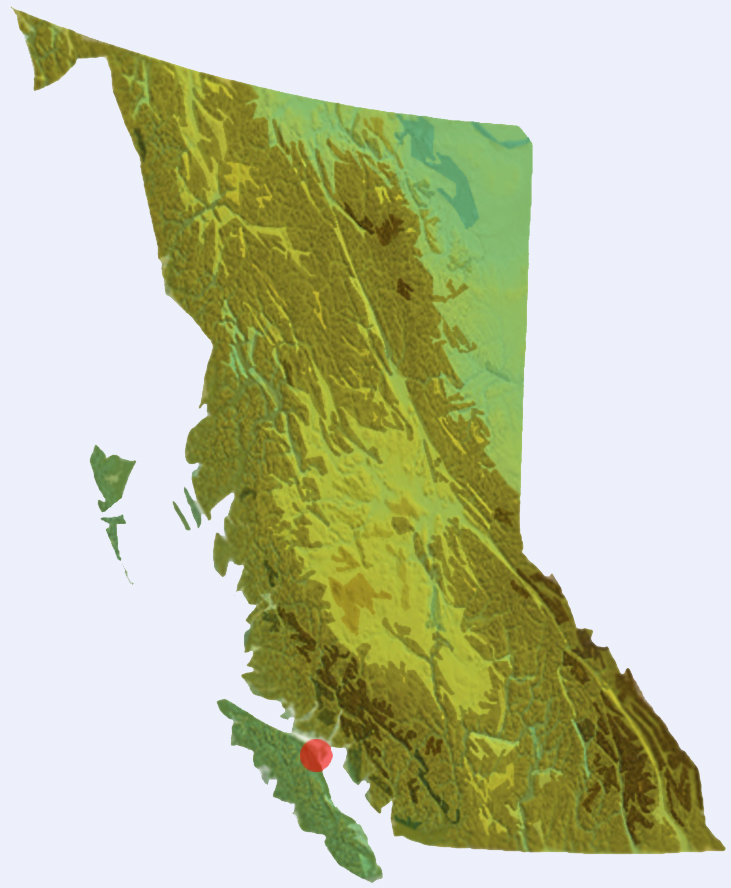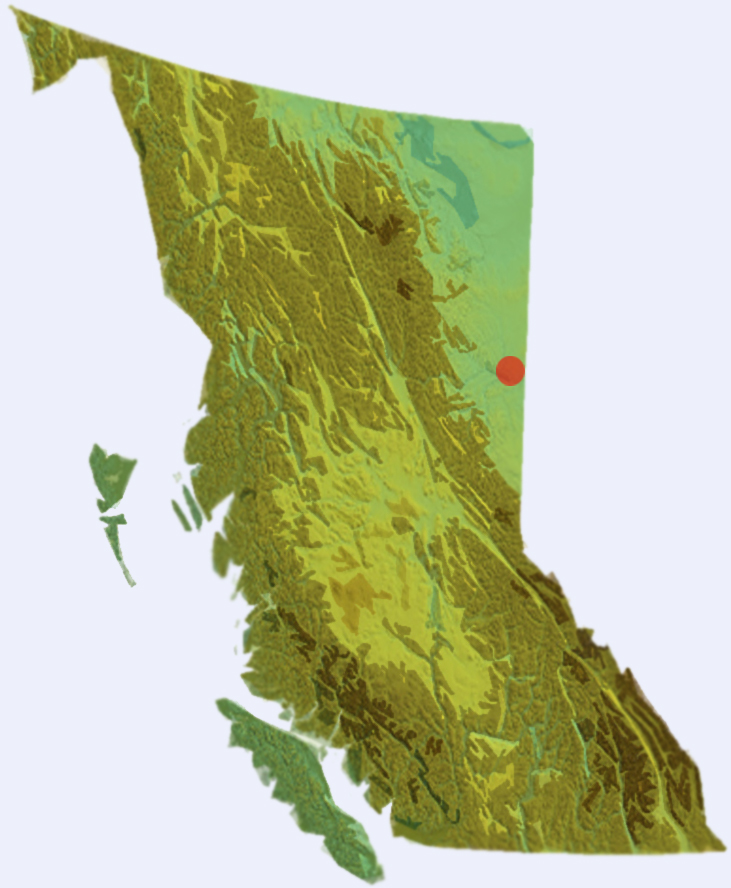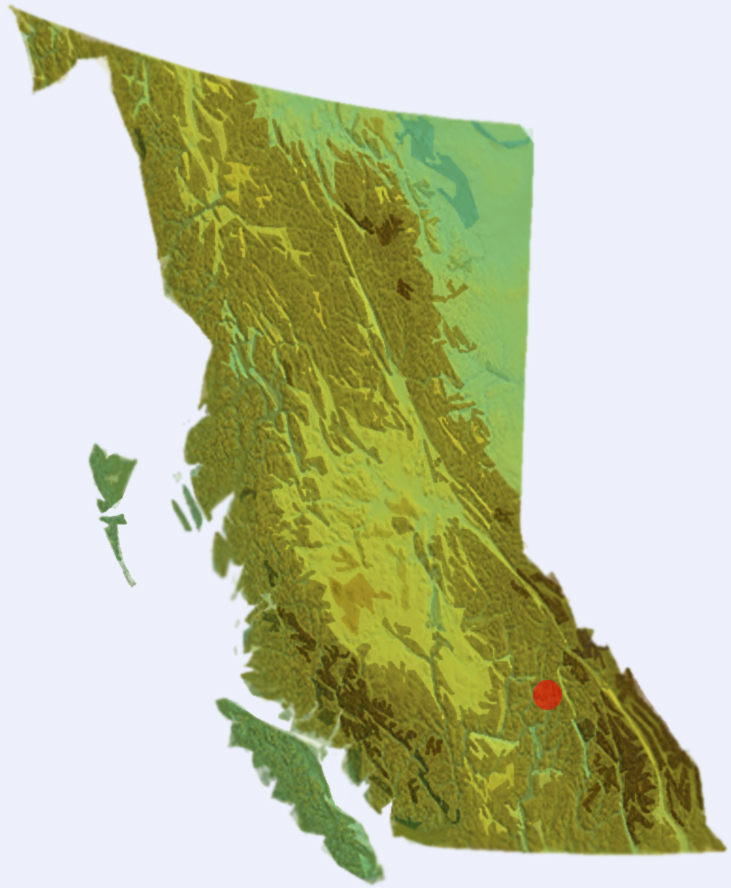Below is a library of the BC case studies conducted through the first phase of the MC3 project. Click on the case study title to access a particular study, and click on the map images to expand and better see a case community's location. The studies and locations can also be seen through exploring MC3's interactive map. For high-level, conceptual overviews of each of the studies, visit our case study word cloud library, which contains visualizations that show key concepts (displayed by relative strength) that emerged through the case study data. MC3 2.0 will test the indicators for transformative change by going back into these communities with a sub-sample of previous interviewees, as well as those people involved in our virtual elected officials peer-to-peer learning exchanges.
Campbell River: From Resource Dependent to Climate Resilient
 |
Campbell River residents traditionally have gained their livelihoods from the extraction and processing of natural resources, and the community has long suffered the boom and bust cycles typical of a resource dependent economy. Campbell River’s approach to sustainable development has been in part reactive to a depressed local economy and the need to both diversify the economic base and reduce expenditures on energy.
|
The City of North Vancouver: Centering on Sustainability
 |
In 2002, the City of North Vancouver engaged in the process of writing its Official Community Plan, and sustainability was a central tenet of the plan. The OCP contains definitions of sustainability, livability, and ‘complete community’, and density is described as a method of achieving these goals. In addition, the OCP contains specific language around energy efficiency and GHG reductions.
|
The City of Dawson Creek: Moving toward Self-sufficiency
 |
Dawson Creek’s oil and gas industry is a major contributor to the city’s economy; however, in the midst of this industry, the City has developed some of the most innovative climate change and sustainability-related initiatives in BC. Years before the Carbon Tax was instituted, Dawson Creek had already begun the process of reducing its corporate and community GHG emissions. Dawson Creek’s move towards sustainability was driven by a desire for self-sufficiency, embodied in the late 90s and early 2000s by a group of citizens wanting to explore alternative energy options in Dawson Creek.
|
Eagle Island: Action Driven by the Community
 |
Eagle Island is a community of 30 homes, located within the municipality of West Vancouver. Through organizing local gatherings, obtaining funding and forming a partnership with local firefighters, Eagle Island resident, Tarah Stafford, led efforts that increased the energy efficiency of 26 homes on the Island. The success of Stafford’s initiative was noticed by the organization Cool North Shore, and Stafford is now working with this group on a broader initiative, dubbed Cool Neighbourhoods, to carry out similar programs in other North Shore communities.
|
Prince George: Planning through Partnership
 |
Prince George is a city of approximately 72,000 residents located at the confluence of the Fraser and Nechako rivers. Beginning in 2007, Prince George undertook a suite of initiatives designed to address environmental issues, with a particular focus on energy efficiency and climate change. More recently, Prince George has also initiated climate change adaptation strategies, and adaptation priorities and strategies were incorporated into the Prince George’s Integrated Sustainability Plan (ISCP), which was later adopted by the City.
|
City of Vancouver: A Mature City in Climate Action
 |
The City of Vancouver is the largest municipality in British Columbia and is located in the southeastern corner of the province, bounded to the west and north by Burrard Inlet and to the south by the Fraser River (a major shipping route). The City of Vancouver embeds a long-standing political and popular culture of awareness of and attention to the risks of climate change and an overall ethos and identification with environmental urbanism.
|
T'Sou-ke First Nation: Leading the Way to Sustainability
 |
T’Sou-ke is located on the southwest end of Vancouver Island. T’Sou-ke Nation consists of approximately 250 members, 150 of which live on the reserve, in 96 residences. The T’Sou-ke community traditionally has been economically involved in forestry and fishing industries; however, recently, T’Sou-ke has become a leader in community-based renewable energy.
|
Revelstoke: A Long History of Community Planning
 |
Revelstoke is a small community with a land area of around 31.9 sq. km and a population estimated at 7,329. Though modest in size, Revelstoke has a long history of community planning that is carried out with significant public input. Revelstoke is currently in the process of developing an Integrated Community Sustainability Plan, which will serve to update portions of the Official Community Plan and set out a comprehensive vision for community sustainability.
|
Surrey: Addressing the Issue through the Lens of Sustainability
 |
The City of Surrey is a rapidly growing municipality in the Lower Mainland of British Columbia. Through the lens of sustainability and energy resilience, Surrey is pursuing a suite of climate change mitigation and adaptation strategies. These include the creation (and possible future expansion) of a District Energy System, densification, climate change action planning, and the development of an overarching Sustainability Charter.
|
Carbon Neutral Kootenays: Realizing Collaborative Potential
 |
Carbon Neutral Kootenays (CNK) began in 2008, when the Regional Districts of Central Kootenay, East Kootenay, and Kootenay Boundary connected with the Columbia Basin Trust to collaboratively prepare a carbon neutral action strategy. The key driver of this innovation was to strategically respond to the goals of the Climate Action Charter and to create coherence among the diverse regional, local and First Nation governments in the Kootenay Region.
|
Victoria: Integrating Climate Action within Broader Sustainability Goals
 |
The City of Victoria is a community of 78,000 people located on the Southern tip of Vancouver Island. An aging citizen population and aged infrastructure, combined with the economic downturn, reinforced the need for anticipatory planning in order to minimize potential costs and risks arising from climate and energy uncertainty.
|






